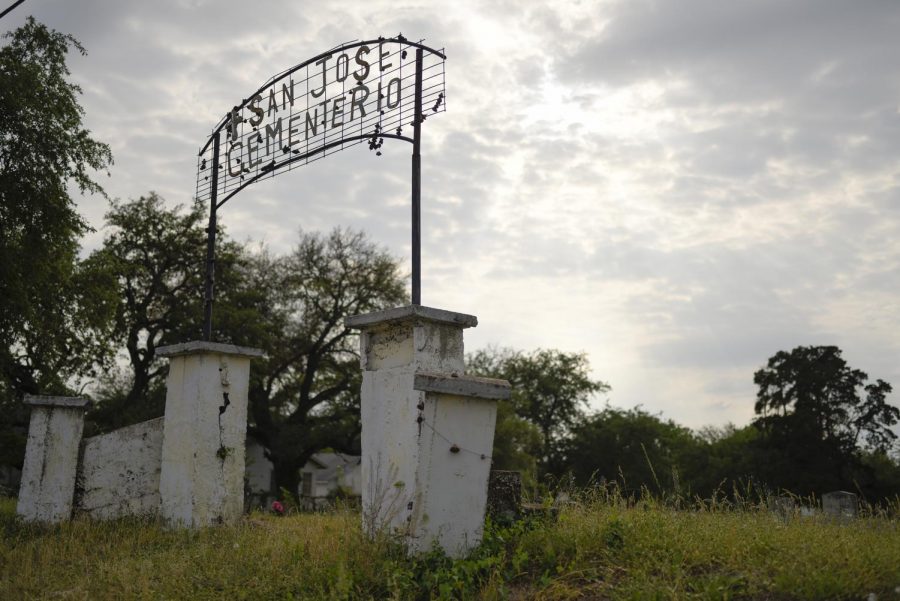UT-Austin researchers work to protect historic Mexican American cemetery
April 13, 2021
Two UT architecture graduate students are currently working to preserve a century-old Mexican American burial land with a largely undocumented, Indigenous history.
After developing their community research lab (Re)claiming Memories in January 2020, students Diana Hernández and Mitch Ford stumbled upon the San Jose Cemetery, established in 1919. Hernández said she could tell while driving past that the land was a hidden space worth investigating and protecting.
“I had to stop because of the sign that said ‘Cementerio San Jose,’ and I could tell that the sign was really old,” Hernández said. “I made it my mission to research it.”
Ford said the pair is currently working to prevent part of the cemetery from being destroyed. Warehouse construction is occurring near the burial site, and Ford said he is concerned crews may unintentionally harm the remains that lie there. Ford and Hernández are currently trying to make city leaders aware of this burial ground so they can offer protections.
“The biggest threat right now is construction,” Ford said. “A lot of times, cemeteries have bodies outside of their boundaries, so there might be something going on that we don’t see.”
Hernández said Mexican American history is often overlooked and is not well recorded. After analyzing the remains and reaching out to the descendants of those buried in the cemetery, she discovered the land was first used as a burial site for migrant sharecroppers and has since become ownerless, she said.
“The area itself predates Austin,” Hernández said. “It stood the test of time, and it doesn’t really have any protection.”
William Delgado, a geography graduate student and researcher, said burial land preservation is vital for keeping connections and showing respect to those who have passed. Delgado said the only con is that an increasing amount of land will be required to bury those who have passed away because of growing population rates.
“Unless more people decide to be cremated or have an eco-burial, we’re going to need more and more land for cemeteries,” Delgado said.
Delgado said while he does not believe the site is under immediate threat, it is important to remember who is buried and the cultures they belong to.
“How is that past history affecting our present?” Delgado said. “It seems that there is a needed dialogue happening.”
Hernández said she hopes future generations will use burial lands to acknowledge the past and become community voices.
“If we don’t save these sites, there’s a younger generation that won’t have that sense of identity, sense of belonging,” Hernández said.



